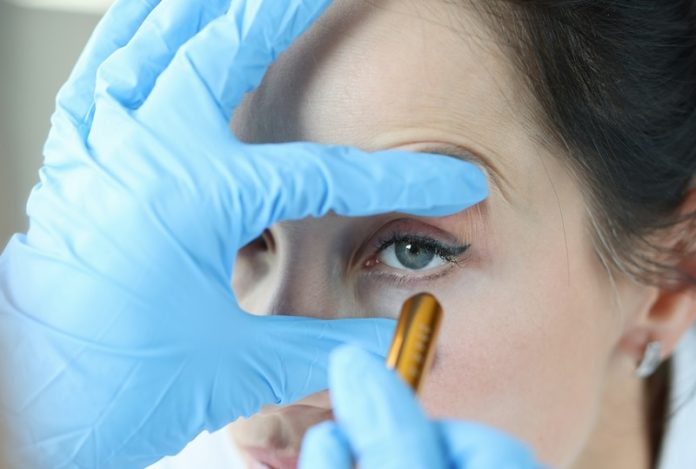
Diabetes affects various parts of the body, including the eyes.
Blurry vision is one of the first warning signs many notice, prompting concerns about the link between visual changes and diabetes.
This connection is crucial because it highlights how high blood sugar levels can lead to complications that are not just life-altering but potentially irreversible.
Diabetes can cause blurry vision in several ways, primarily through the high blood sugar levels that accompany uncontrolled diabetes.
When blood sugar levels are high for an extended period, it can lead to swelling in the tissues of the eyes due to fluid leaking into the lens, the part of the eye that focuses light. This swelling changes the shape of the lens, making it harder for your eyes to focus, thus causing temporary blurriness.
The good news is that this form of blurred vision is often reversible. Managing blood sugar levels effectively can return the lens to its original shape and clarity of vision.
However, consistently high blood sugar levels can lead to more severe and permanent eye conditions, such as diabetic retinopathy.
Diabetic retinopathy occurs when high blood sugar causes damage to the blood vessels in the retina, the back part of your eye that senses light. Initially, this condition may not cause any symptoms, but over time it can lead to blindness if not treated.
It is the most common cause of vision loss among people with diabetes and a leading cause of blindness in adults.
Research has consistently shown that early detection and treatment of eye problems in diabetics can lower the risk of blindness by 95 percent. Regular eye exams are crucial, as damage can be done before the vision is affected.
The National Eye Institute recommends that people with diabetes have a comprehensive dilated eye exam at least once a year. These exams allow eye care professionals to detect early signs of retinal damage before any significant vision loss occurs.
Another condition linked to diabetes that can affect vision is diabetic macular edema (DME). It is a consequence of diabetic retinopathy and involves swelling in an area of the retina called the macula, which is responsible for sharp, straight-ahead vision.
DME can cause significant vision loss and is treated with medications that are injected into the eye, laser therapy, or surgery.
Cataracts and glaucoma are also more common in people with diabetes. Cataracts cause the lens of your eye to cloud, obscuring vision. People with diabetes tend to develop cataracts at a younger age and the condition progresses more rapidly than in those without diabetes.
Glaucoma, which increases pressure in the eye that can pinch the blood vessels that carry blood to the retina and optic nerve, can cause vision loss and blindness if not treated. Studies indicate that the risk of glaucoma is nearly twice as high in people with diabetes compared to those without.
Managing diabetes is the key to preventing vision-related complications. Keeping blood sugar levels within a healthy range, maintaining a healthy diet, exercising regularly, and not smoking can help reduce the risk of eye problems.
Moreover, since symptoms of eye diseases can be minimal until the condition is advanced, regular monitoring by an eye care professional is crucial.
In conclusion, blurry vision can be a significant indicator of diabetes and potential eye-related complications. Understanding the connection between diabetes and eye health is vital for preventing long-term damage.
With appropriate medical care and lifestyle adjustments, individuals with diabetes can protect their vision and overall health.
If you care about diabetes, please read studies about Vitamin D and type 2 diabetes, and what you need to know about avocado and type 2 diabetes.
For more information about diabetes, please see recent studies about how to eat to prevent type 2 diabetes, and 5 vitamins that may prevent complication in diabetes.
Copyright © 2024 Knowridge Science Report. All rights reserved.



